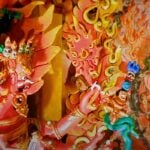The Lightning Path of Buddhism: The Power of Yidams
Guest Contributor: Bhagat Bhandari
Note: This is a personal perspective of the author.
What is the purpose of Vajrayana practice? Purifying one’s impure perception of all appearances and experiences.” —— His Eminence Jamgon Kongtrul Rinpoche the Third
Yidam practice is a teacher-guided method on the vajra “lightning path” to enlightenment, Vajrayana. In this important path, meditating and honouring your own personal Yidam allows for fast comprehension of the nature of reality — and deeper insight into Dharma. Yidam, literally means “heart bond deity” which points to the close relationship we should experience.
Nevertheless, despite the highly personalized and intense nature of Yidam practice, guidance of a realized Guru or teacher important. It is also a major commitment to a path that achieves goals quickly, but requires focus, imagination, wisdom and compassion. Yidam practice is all about helping us see reality as it truly is. By visualizing ourselves as perfect Yidams, we start to understand the illusory nature of “conventional” perceptions. And, we also reinforce our understanding that we, ourselves, have Buddha nature within.
“When you do these practices, this “I” —– ordinary man or woman ego —– is already gone.” —– H.E. Zasep TULKU Rinpoche
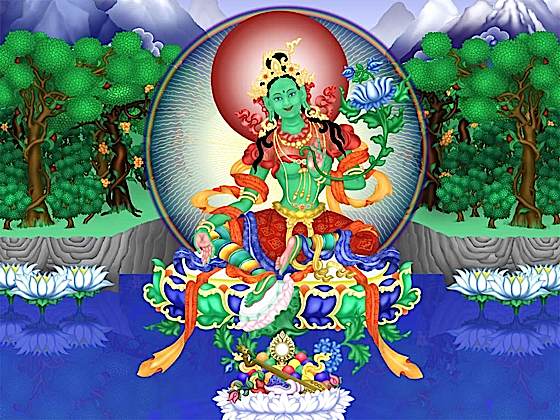
Personal Yidam Practice
It may seem contradictory, but Yidam practice, where we visualize ourselves as an enlightened deity, is designed to help us overcome our sense of “ordinariness” and to demonstrate, in a sense, the emptiness of our perceptions.
Zasep Tulku Rinpoche described Yidam practice — in an interview in Buddha Weekly — in context with “emptiness”:
“…Every time you do any of these practices, first you meditate on emptiness. You start with the Sanskrit mantra, Om Svabhava Shuddo and so on, “every thing becomes voidness.” Then you visualize your consciousness arising as a seed syllable, then the deity. So, when you do these practices, this “I” — ordinary man or woman ego — is already gone. You transform the I, or ego, by meditating on emptiness. When there is no self, who is there to be angry? Who is there to be terrified?”
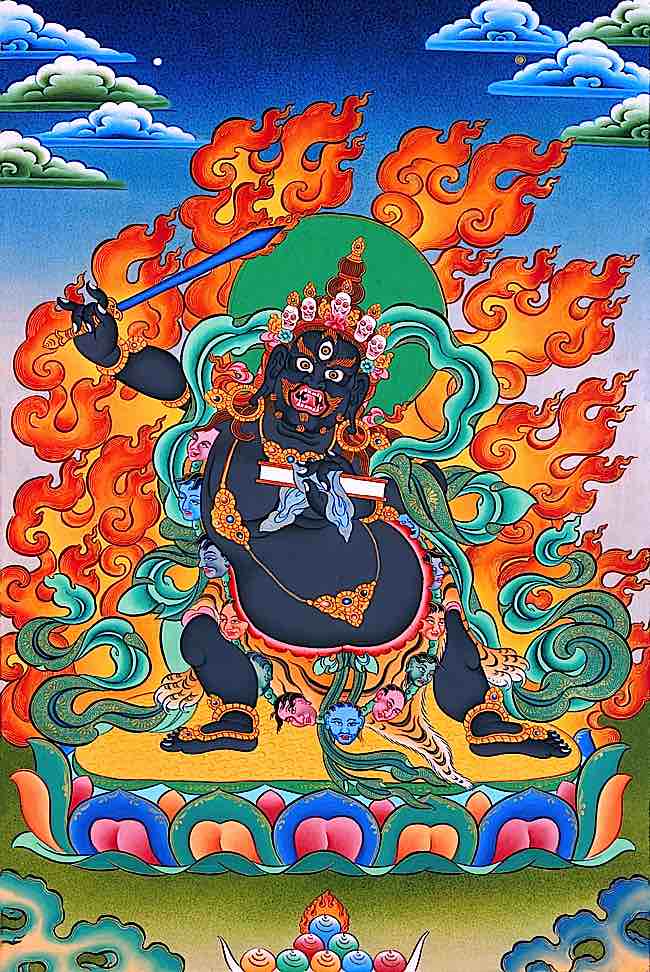
A Yidam is an fully enlightened deity and often becomes the central focus of personal practice, once adopted. Since all enlightened beings have the same realizations, focus on a single Yidam—suited to the student—is beneficial, but not necessary.
A teacher might help a student choose a Yidam particularly appropriate to their current stage of practice, or to focus on a particular obstacle the student is facing. Just as every person is unique, Yidams are uniquely suited to personalized practice. The unique nature of each Yidam relates more to what a student needs in his or her practice, than to a personal preference.

If Tara, for example, is a person’s Yidam, it is important to understand that She is a Buddha with omniscient mind and all the qualities of a Buddha. At the same time, we might choose Tara because of Her active nature. Green Tara represents the active method of pursuing wisdom, compassion and enlightenment. Her practices help people who require an active method. Yet, we can turn to Tara for healing in times of sickness, or to purify karma, if She is our deity—without need to seek out Medicine Buddha practice for healing or Vajrasattva Practice for purification of negative karma.
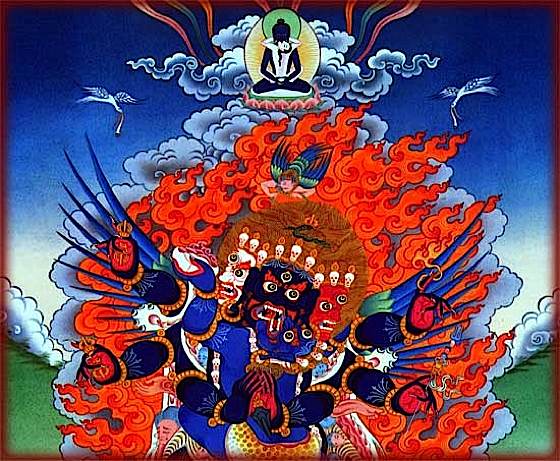
What is a Yidam?
In the broadest, loosest sense a Yidam is a meditational deity. The symbolic representations of the Yidam—conveyed with attributes such as poses, mudras (hand gestures) and symbolic items—help the mind focus on the needed deity.
The deity can be understood different ways. A buddha has three main bodies (Trikaya), known as Dharmakaya, the truth body — beyond existence and non-existence — the Samboghakaya, or body of Enjoyment, and Nirmanakaya or, the form body. The “body” means a collection of qualities that help us to understand. The Dharamakaya — described in my simplistic way — could be thought of as the enlightened mind, the Buddha that has eliminated all defilements and is beyond our concept of existence.
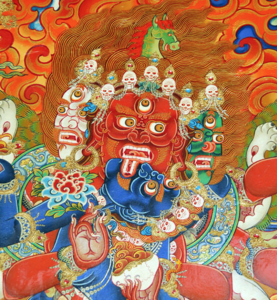
The Nirmanakaya is a skillful means by which the Buddha can communicate with unenlightened sentient beings. Since we cannot, at this time, know the mind of the Dharmakaya, we rely initially on the Nirmanakaya. Personal Yidams benefit us by presenting Nirmanakaya’s that can benefit us now, at our current stage of practice.
Yidams allow people to overcome obstacles, obscurations and defilements. For example, a person who lacks compassion, may follow a Yidam known for compassion. A person, in advanced practice, may follow a fiercer version of the Yidam. It is best to allow your teacher to guide you on a choice of Yidam, even though some people are automatically drawn to specific Yidams naturally.
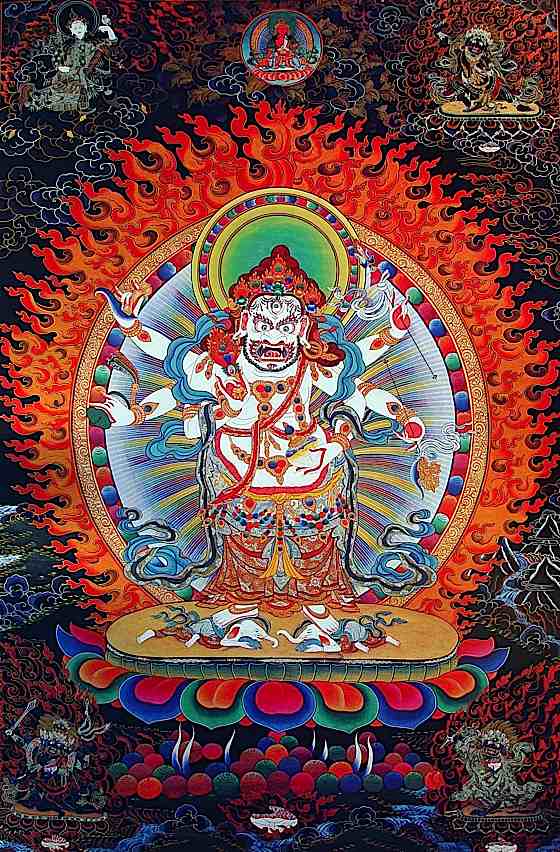
Form Bodies of a Yidam
A Yidam may project a very specific quality. For example, Ekajati may be your Yidam because She projects the quality of having a singleminded focus on Dharma above all else. Ekajati is the protector of secret mantras and “as the mother of the mothers of all the Buddhas,” represents ultimate unity.
Others, might be drawn to Vajrakilaya as your Yidam because of His fierce ability to quash negative karma. Since practice in most Yidams requires initiation or empowerment it is best to work with your teacher to determine your best Yidam.

Key to understanding Yidam practice is an understanding that while we speak of many Buddhas and Enlightened Beings, the qualities of all of these deities are the same. Any Enlightened Being has eliminated defilements, including ignorance, anger, attachment and karmic imprints that keep us trapped in Samsara. Yidams, for want of a not-perfect analogy, are like a Neurosurgeon versus a general practitioner doctor—the “specialists among Enlightened Beings. A Neurosurgeon is a fully trained doctor, but with specialty skills, someone you call upon if you need that expertise, but who can also just as readily treat the flu.
Yidam Practices
The Yidam is a teacher-guided practice. By focusing on what you might need at this stage of practice, Yidam practice makes the path “lightning” or fast. Practice would likely involve elaborate visualizations, mantra recitation, meditation practices, Sadhanas and Pujas that are taught by a teacher. The meditation images, often quite elaborate, help the mind understand and work with the energy of the deity. As the mind is trained, the visualizations become more complex. This isn’t worship, in the classic sense of “church worship” even though, as part of the practice, there’s an element of praise.
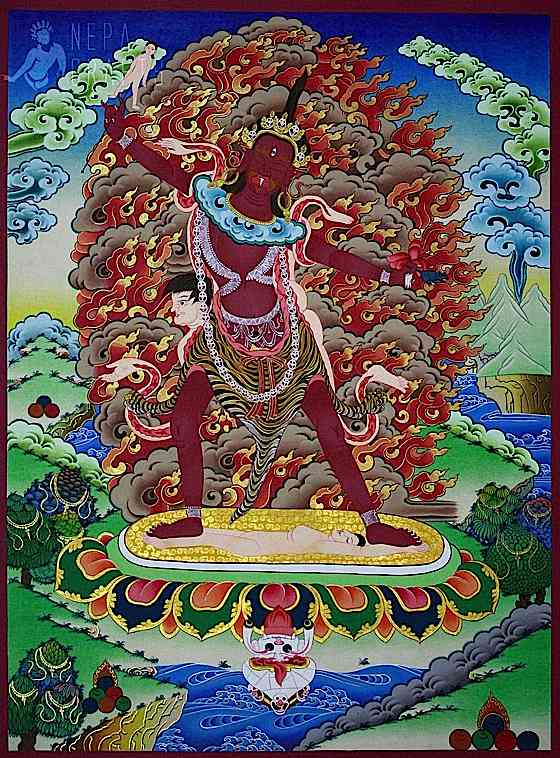
Wrathful Yidams
Yidam’s can be wrathful, as well as peaceful, a concept often misunderstood by non-practitioners as idolization of demonic images. Often depicted wearing garlands of human skulls, or stepping on humans, elephants or other deities, of holding a skullcap of blood, or wearing a human skin, these images are highly symbolic and meaningful. Wrathful practice absolutely requires guru guidance, and is appropriate for practitioners who need active energy in their lives. There is nothing negative about these practices, but the symbolism is intense.
It’s also to keep a sense of focus on meditation in mind. Practitioners are taught to visualize deity absorbing into themselves, representing the realization of Buddha Nature within all of us. Ultimately, highly detailed visualizations dissolve into emptiness, the nature of mind.
Visualization and focus is a crucial requirement in many Buddhist practices because it relates so heavily to keeping the mind under control. Visualization is not dream-making or illusion creation, but rather a mind discipline and practice.
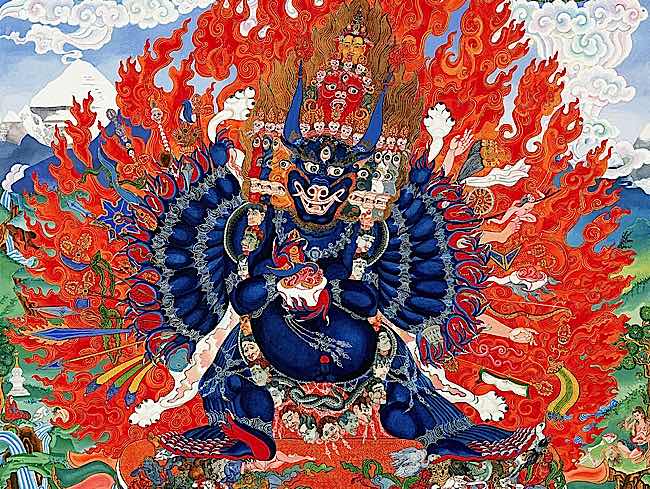
Specialized Yidams
Some Yidams are recommended by teachers with the purpose of encouraging people to overcome specific obstacles or issues. The practice of Yidam Ushnisha-Vijaya may be valuable to someone who has such karma as to likely lead to a short life, as she is the deity of long life in one aspect. White Mahakala, a wrathful manifestation of Avaolokitesvara, the Buddha of Compassion, is thought of in simple terms as a “wealth” deity, and might be drawn upon by those in need. After all, without resources, it is not possible to help other sentient beings.
Focus is not enough for Yidam practice. Even though we can create visualizations and we have empowerment from a teacher, we also need “divine pride”—an understanding of the ultimate nature of the Yidam and a trust in the Yidam. To think of the Yidam as just a meditation focus is not correct practice. At the same time, we understand the ultimate nature of the Yidam is empty.
More articles by this author
Search
Latest Features
Please support the "Spread the Dharma" mission as one of our heroic Dharma Supporting Members, or with a one-time donation.
Please Help Support the “Spread the Dharma” Mission!

Be a part of the noble mission as a supporting member or a patron, or a volunteer contributor of content.
The power of Dharma to help sentient beings, in part, lies in ensuring access to Buddha’s precious Dharma — the mission of Buddha Weekly. We can’t do it without you!
A non-profit association since 2007, Buddha Weekly published many feature articles, videos, and, podcasts. Please consider supporting the mission to preserve and “Spread the Dharma." Your support as either a patron or a supporting member helps defray the high costs of producing quality Dharma content. Thank you! Learn more here, or become one of our super karma heroes on Patreon.
Bhagat Bhandari
Author | Buddha Weekly






